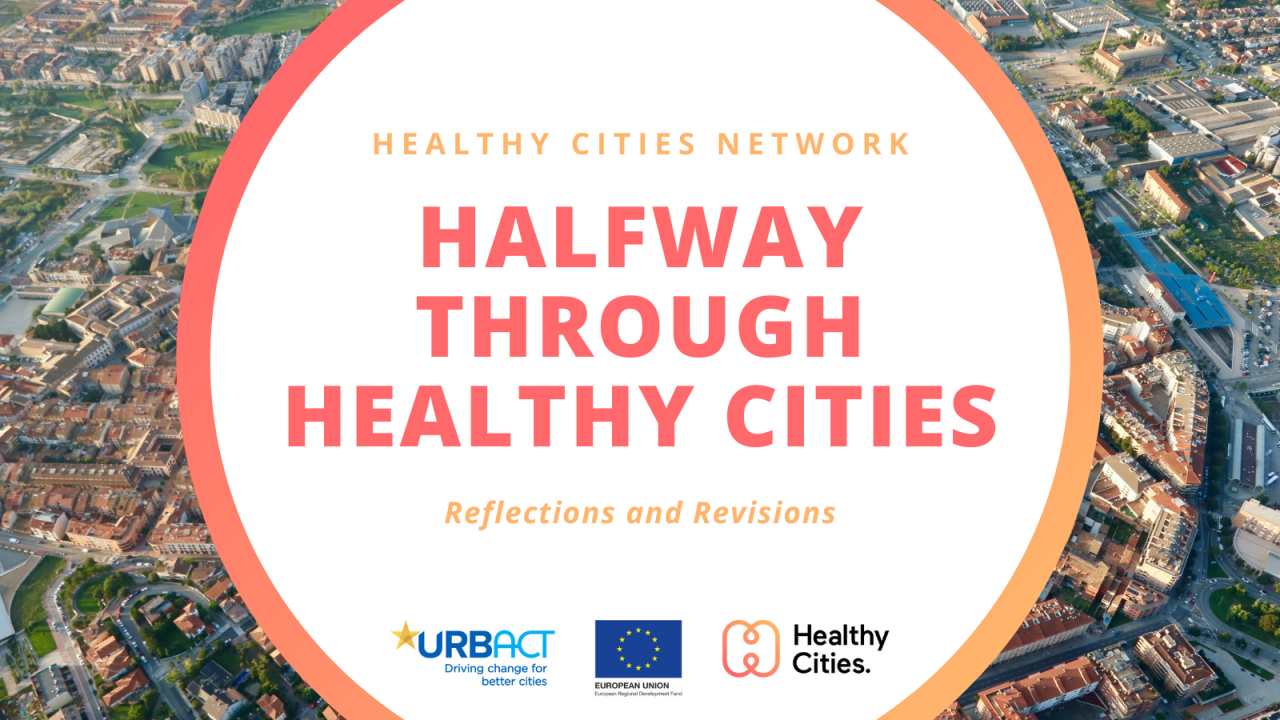
The Healthy Cities Network has passed its halfway point in the project. To evaluate all we’ve done and look ahead at what’s to come, we’re taking this opportunity to reflect on our progress with the Mid-Term Reflection (MTR) process.
by Lead Expert Dr. Sebastiaan van Herk
- Though the pandemic slowed progress in all kinds of work around the world, it brought health into new conversations and ultimately has strengthened support for healthy urban planning.
- Partners got creative in citizen engagement, working with COVID restrictions to plan safe activities that involved locals in Healthy Cities work.
- Due to the accessibility of online meetings, partners were eager to join more deep dives outside of their own sub-themes and learn more about other topics in the network, enabling more knowledge exchanges across the network.
- Our team is working on a power tool that will push past remaining risks, accelerating the Integrated Action Plans and facilitating transnational collaboration and URBACT Local Group interaction - the Healthy Cities Generator. This digital Health Impact Assessment is a comprehensive yet user-friendly tool that allows professionals to assess their plans from both a health and an urban planning perspective.
From June to November 2021, partners have been concretising their reflections on the first half of the project (May 2020-September 2021) to evaluate their progress and modify their original plans to ensure they can meet their initial goals. Reflecting part-way through the project is fundamental to achieving our objectives. With an overview of the successes and the challenges encountered, we can improve and adapt the rest of the project to the unique situations and needs of our partners.
Mid-Term Reflection
Our partners have been preparing for this mid-term reflection throughout the 2nd half of 2021:
During the 3rd transnational meeting in June, they reflected on the Deep Dives that had taken place up until that time and provided summaries of key learnings and outcomes.
In September, the partners took a mid-term survey to gather information on their experiences in the network so far. This activity fuelled the conversations sparked in June’s transnational meeting, allowing the team to further develop their reflections and evaluate their progress in greater depth.
At the end of November, the partners met in a hybrid setting for the official MTR Network Meeting, providing an opportunity to elaborate on each city’s progress and establish a common understanding of key challenges and next steps.
A Global Challenge
The largest challenge facing our network was, unsurprisingly, COVID-19. Restrictions on movement and social activity slowed progress down in all kinds of work across the globe. However, when the type of work relies on collaboration and stakeholder engagement, most effectively achieved in face-to-face meetings, the challenge becomes even greater. Beyond this, COVID-19 directed the focus of health-related fields towards pandemic response, making urban planning for health a lower priority for stakeholders and making engagement far more difficult.
The silver lining is that the pandemic brought health into conversations across the board. As the world emerges from this crisis, support for health initiatives is stronger than before. When one is locked down in a city, they feel the impact of their urban environment far more strongly. Lacking nearby amenities and green spaces and being unable to cycle or go for a walk due to surrounding infrastructure makes the issue of urban planning for health far more tangible and personal for many people, building support for the kind of work pursued by Healthy Cities.
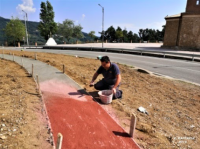
Figure: Building a bicycle path in Falerna
At a Glance
Though the pandemic presents a challenge to the project’s work, it also gives our partners the opportunity to reflect on how to respond to COVID-19 with health-focused urban planning and to leverage COVID-19 to enhance the Healthy Cities project. During this first period of Phase 2, the key activities planned were developed, but with some adaptations (both in the calendar and in the format) due to the pandemic.
So far, the planned transnational meetings and Deep-Dive meetings have all taken place in digital format. The fact that all meetings have been held virtually has brought a number of challenges, but also opportunities. Due to digital accessibility, partners were eager to join more deep dives outside of their own group and learn more about other topics in the network. This enabled more learnings and exchanges across the network.
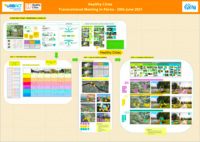
Figure: MIRO board from the Transnational Meeting hosted by Pärnu
Following the willingness of all partners to develop a joint methodology for health impact assessment, the partnership took a major step forward during the first months of phase 2. All partners decided to allocate part of the unspent travel budget to the development of a tool to support the mainstreaming of health in urban planning - the Healthy Cities Generator.
A recurring theme of the mid-term reflection was partners’ interest in developing their knowledge of Health Impact Assessment (HIA) and working more closely with the Healthy Cities Generator. Some have found HIA to be a bit difficult, but they still feel the process is inspirational to consider health in planning and discover new suggestions for improvement. These challenges are partially why partners are so eager to further explore the Healthy Cities Generator. As a comprehensive yet user-friendly tool that allows professionals to assess their plans from both a health and an urban planning perspective, this will help partners enhance their expertise in analysing their plans for projected impacts before implementing the changes.

Figure: Example evaluation with the Healthy Cities Generator
Where the Healthy Cities approach is being used, implementation in some cities is already underway and generating impact sooner than foreseen in the original URBACT timescales. To date, much funding has been mobilised. For example, in Bradford >50M GBP of national UK funding for redevelopment is being made available where the Healthy Cities approach will be used. Over the last year, other cities have delivered nature, cycling paths, and sports facilities in public spaces - all 'shovel in the ground’ already.
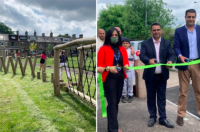
Figure: Bradford, UK - Kashmir Park and Attock Park bringing BGI and playspace to urban neighbourhoods
The results are overwhelmingly positive for partners working to ensure their plans are integrated and comprehensive, providing health oned the Lead Expert with help from Lead Partner to develop a Catalan version of the tool to apply the lessons from Vic to other Barcelona cities. By working together with departments across the municipality, partners are striving to avoid silos and ensure their plans incorporate both physical investments and human resources in urban regeneration.
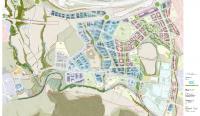
Figure: Urban plan in Barcelona, Spain, based on the HCG
Locally-Driven Health
Collaboration with the URBACT Local Groups (ULGs) has been quite successful overall, as they provide a lot of value to the project and to developing the IAPs. The majority of partners were able to shift their ULG meetings online and generally follow the schedule of meetings foreseen in their initial IAP Roadmaps. These partners report that their groups have been very engaged and supportive of the Healthy Cities objectives, often with different representatives getting involved in the group depending on the topic of that specific ULG meeting.
Once ULG members understand the project objectives they can easily join in and collaborate, highlighting the importance of clearly communicating the project’s goals to enable more engagement from the ULGs. An important consideration with communication here is the added difficulty when materials are not in partners’ local languages. While the best solutions will vary by partner, the team is exploring some solutions like auto-translation tools as a helpful starting point.
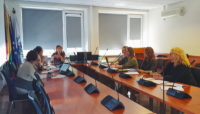
Figure: In-person ULG meeting in Anykščiai 23 July 2020
Harnessing activities from the ground up
The majority of partners have already begun or completed their Small-Scale Actions, with just a couple awaiting kick-off. There have been many approaches to these, from community engagement events, to awareness campaigns, to a mobile app tool, and more. Restrictions made in-person activities difficult and shifted health priorities away from urban planning, limiting available stakeholders. To adapt, partners moved their activities outdoors and got creative with new COVID-friendly ideas such as posting signs, handing out flyers, and tree planting. By limiting COVID risks in their activities, partners made their work safely accessible to citizens and boosted overall engagement.
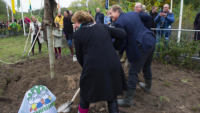
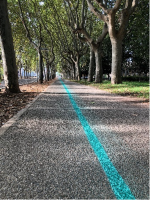
Figure: Tree planting in Alphen aan den Rijn (left); Green passage to Vic's Puig dels Jueus green space (right)
- Alphen aan den Rijn, Netherlands: Alphen harnessed their SSA to spread awareness and engage citizens in their work. The team created a promotional flyer inviting locals to fill in an Online Tiny Survey and had it printed in biodegradable ink on a plantable card with bee- and butterfly-friendly flower seeds, providing them a little greening present that supports biodiversity as a thank you in return for the requested effort.
- Anykščiai, Lithuania: Anykščiai is pursuing an activity called “Pedestrian bridges - alive places” with the aim of promoting more walking and enlivening their bridges with greenery and comfortable resting points for locals. When the work on the bridges is complete, the team will host a green dinner with local citizens and guests from other URBACT projects in Lithuania to discuss connecting architecture, people, and greening, and how to make traditions out of these themes.
- Bradford, United Kingdom: Bradford is pursuing multiple SSAs, with a focus on promoting active travel in schools and the community. These are carried out alongside their partner project JU:MP (Active Bradford/Sports England funded project) to engage schools and champion active travel.
- Falerna, Italy: Falerna is organising a number of campaigns that aim to support the project’s objectives of preventing chronic disease and improving quality of life and wellbeing for citizens. Their SSAs focus on promoting theoretical, practical and instrumental activities that guide the population in the daily application of balanced lifestyles adapted to individual realities, respecting the socio-economic, food, environmental and climatic context in which each person lives.
- Farkadona, Greece: Farkadona is testing several SSAs in their city that combine sustainable mobility, culture, physical activity, and health to gauge community interest in healthy cities. In total, these SSAa encompass Natural and Historical Paths marking, Activity Trackers to citizens, Public Walk via Paths, and Calories consumption awards.
- Loulé, Portugal: Loulé is testing one SSA - a project called “Bicycles at School”. With the goal of changing opinion on cycling as the main mode of transport in urban areas, the project promotes the benefits of changing school transport habits to give children more skills, autonomy, and better integration with nature, ultimately reducing their carbon footprint and leaving them more open-minded.
- Malta: Malta is working on one SSA - the Healthy Cities mobile app. It has been developed in-house to promote healthier lifestyles by encouraging walking and increasing connectivity within the historic city of Senglea, whose physical features provide varying levels of physical activity. To further enhance the walking experience, points of historical and cultural interest have been indicated, together with corresponding physical exercises to add to the walking experience.
- Pärnu, Estonia: Pärnu worked together with the Culture Club, a very interested and engaged local group, to set up both a Christmas light installation and create a gate area for the club. The aim of this activity is to give citizens a reason to spend time outside and walk on Jaanson path in off season, introduce a new cultural place and open it from the riverside, and give Jaanson path some cultural and social value, making it a “Cultural lighthouse”.
- Vic, Spain: Vic implemented multiple actions to raise awareness of the renewed green zone - the Puig dels Jueus area. These actions took place over a 2 week period and included identifying routes, installing signs and entrance gates, and organising events and information panels. This public display of Vic’s Healthy Cities work sparked a lot of curiosity in the population and put the Puig dels Jueus area in the spotlight.

Figure: Malta’s Mobile Application
Sharing Knowledge
In our partners’ experiences, the Healthy Cities Network has already been a tremendous learning opportunity. The most educational activities were exchanging with cities in the network and inputs from thematic programme experts, followed by inputs from external contributors, knowledge from the lead expert, and exchange with other URBACT networks. This is important to highlight because this exchange between different regions and cities is at the core of Healthy Cities’ work. All partners have so much to learn from each other and so much to share with one another, so it is rewarding to see that the team is effectively leveraging the advantage of having insights and perspectives from nine different places.
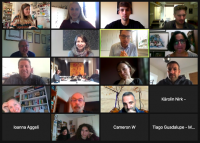
Figure: the Healthy Cities team at the MTR meeting
Generating Health with Urban Planning
A central area in which the team is eager to develop is HIA. As partners work on their IAPs, they will continue working with various assessment tools, including the Healthy Cities Generator.
A key risk considered at the start of the project was that partners’ actions in the IAP will not adequately incorporate health in their planning actions - so they may have a plan for greening a certain area that does not explicitly consider health or is not optimised for health. We have turned this possible risk into an opportunity with our network final product, which helps optimise urban planning for health through a comprehensive and easy-to-use HIA. The team has been working with this resource since mid 2021, helping the generator’s development and already supporting health optimisation in ongoing planning work.
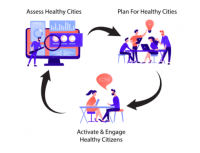
Figure: Healthy Cities Generator process
The Healthy Cities Generator has emerged as a tremendously useful tool, not only for engaging the network and transferring knowledge, but also for strengthening the plans and activities partners are delivering through Healthy Cities. Beyond using this to assess plans and ensure they really do have a positive impact on health, the tool also allows partners to back up their plans with data, which makes it easier to engage more stakeholders and build political support for the project. When there is clear evidence to prove that an idea for urban planning will truly improve health for citizens, people are far more likely to support the action.
What’s next for the Healthy Cities Network?
Going forward, the team will work much more closely with the Healthy Cities Generator. The Lead Partner (LP), Lead Expert (LE), and Ad-hoc Expert (AHE) are supporting partners in learning how to use the tool itself and in leveraging the tool for many purposes. Partners want the most support in interpreting the HIA results and facilitating discussions in ULG workshops with stakeholders. Next, nearly half the partners would like support in defining health objectives, which is a key skill required for using the tool. Lastly, a third of the partners have asked for support in exploring and discerning planning actions, which is knowledge that will only build as partners experiment with the tool. The generator tool is already helping to facilitate dialogue between departments and stakeholders, especially in the ULGs.
To provide the best support to partners in achieving their goals and mitigating their potential risks, the Healthy Cities Network will prioritise developing partners’ knowledge of HIA, with special focus on a “learning by doing” approach. This will involve a lot of work with the Healthy Cities Generator on behalf of the full team. Until now, partners have been using a spreadsheet version of the generator that has been adjusted and improved over the course of the project. Partners will continue to work with the spreadsheets, but a newer, more user-friendly version is in development. The team is creating an online tool powered by the spreadsheet that displays a single page with the network’s defined determinants. Here, partners can input their individual information and a graph will visually display the impact of their planning actions.
Partners are very eager to improve their urban plans with the Healthy Cities Generator, ensuring the plans include health, and to use the tool to improve their IAPs. They are excited about having an enduring and scalable product to support their current and future urban development projects that run in parallel and beyond their current IAPs. Various cities from other networks have expressed interest and the team has already held workshops with some, most notably from Ri-Connect and Health&GreenSpaces.
To stay up-to-date with our latest progress on the Healthy Cities Generator, follow us on Twitter and LinkedIn and check out our new website.
Discover More
- In 2021 the network increased focus on engagement and visibility to stimulate capitalisation. This approach will be continued into 2022. Between the LP and LE, Healthy Cities has already been presented at over 15 conferences.
- This video is a snapshot of a conference where the LE and AHE promoted and presented Healthy Cities.
- In November 2021, the LP is going to the POLIS conference on Mobility in Gothenburg.
- Back in September, the LE presented at the digital seminar of Transcend with URBACT.
- The LE also presented in October at a CIRIA conference on ‘Adapting to change using blue-green infrastructure’.
- The municipality of Farkadona’s representative Konstantinos Asikis has joined the WHO working group on climate change and health and is working with renowned experts from Europe, Asia, and the United States.
- The LP together with Farkadona recently published a chapter in a book titled “Smart Planning for Healthy Cities (Urban Space Is Not Just a Place): Leading Cities to a Healthier Future”.
- Furthermore, partner cities are getting noticed internationally for their work; for example in this article on Bradford and their expert Saira Ali’s work in landscaping.
- In terms of project outputs, the Healthy Cities Generator already has its own website and has been featured in articles in external news outlets and professional publications.
- The projects’ Social Media does so well in engagement that the messaging is now moving more towards a “healthy cities movement” rather than simply a network link.
- Some partners, like Bradford, have created beautiful short clips and longer videos that show how local people are engaged in urban planning for health through URBACT and sister projects. A shining example is this video dedicated to Healthy Cities and community work on the ground.
